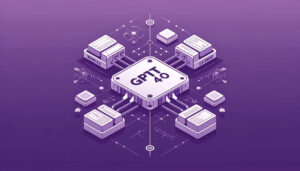Natural Language Processing Revolutionizes Communication and Data Analysis

What is NLP?
Natural language processing (NLP) is a field that merges computational linguistics—rule-based modeling of human language—with statistical and machine learning models to enable computers and digital devices to recognize, understand, and generate text and speech.
As a branch of artificial intelligence (AI), NLP is integral to applications and devices that:
- Translate text from one language to another
- Respond to typed or spoken commands
- Recognize or authenticate users based on voice
- Summarize large volumes of text
- Assess the intent or sentiment of text or speech
- Generate text, graphics, or other content on demand
Today, most people encounter NLP through voice-operated GPS systems, digital assistants, speech-to-text dictation software, customer service chatbots, and other consumer conveniences. Beyond consumer applications, NLP is increasingly used in enterprise solutions to streamline business operations, boost employee productivity, and simplify mission-critical processes.

NLP Tasks
Human language is complex and filled with ambiguities, making it challenging to develop software that accurately interprets text or voice data. Homonyms, homophones, sarcasm, idioms, metaphors, and variations in grammar and sentence structure are just a few of the irregularities that NLP applications must learn to handle from the outset.
Several key NLP tasks help computers make sense of human language:
- Speech recognition (speech-to-text): Converts voice data into text data. It’s crucial for applications that follow voice commands or answer spoken questions, despite the challenges posed by the nuances of human speech.
- Part of speech tagging: Identifies the part of speech of words based on their use and context, such as distinguishing between “make” as a verb in “I can make a paper plane” and as a noun in “What make of car do you own?”
- Word sense disambiguation: Determines the correct meaning of a word with multiple meanings based on context, like differentiating “make” in “make the grade” (achieve) vs. “make a bet” (place).
- Named entity recognition (NER): Identifies words or phrases as entities, such as recognizing “Kentucky” as a location or “Fred” as a person’s name.
- Co-reference resolution: Identifies when two words refer to the same entity, like determining the pronoun “she” refers to “Mary.”
- Sentiment analysis: Extracts subjective qualities—such as attitudes and emotions—from text.
- Natural language generation: Converts structured information into human language.

NLP Tools and Approaches
Python and the Natural Language Toolkit (NLTK): Python offers a range of tools and libraries for NLP tasks, many of which are part of the Natural Language Toolkit (NLTK). NLTK includes resources for tasks such as sentence parsing, word segmentation, stemming, lemmatization, and tokenization, as well as capabilities like semantic reasoning.
Statistical NLP, Machine Learning, and Deep Learning: Initially, NLP applications were rule-based systems, but these couldn’t scale effectively. Statistical NLP combines algorithms with machine learning and deep learning models to classify and label text and voice data, assigning statistical likelihoods to different meanings. Deep learning models, especially those based on convolutional neural networks (CNNs) and recurrent neural networks (RNNs), enhance the ability of NLP systems to learn and extract meaning from large, unstructured datasets.

NLP Use Cases
- Spam Detection: Uses text classification to identify spam or phishing emails based on language patterns.
- Machine Translation: Tools like Google Translate go beyond word-for-word translation to accurately convey meaning and tone between languages.
- Virtual Agents and Chatbots: Examples include Apple’s Siri and Amazon’s Alexa, which use speech recognition and natural language generation to respond to voice commands. Chatbots use similar techniques for typed inputs.
- Social Media Sentiment Analysis: Analyzes language in social media to gauge attitudes and emotions, helping businesses understand consumer responses.
- Text Summarization: Processes large volumes of text to create concise summaries, often using semantic reasoning and natural language generation to add context and insights.
NLP continues to evolve, driving advancements in both consumer applications and enterprise solutions, making it an essential component of modern AI technology.




